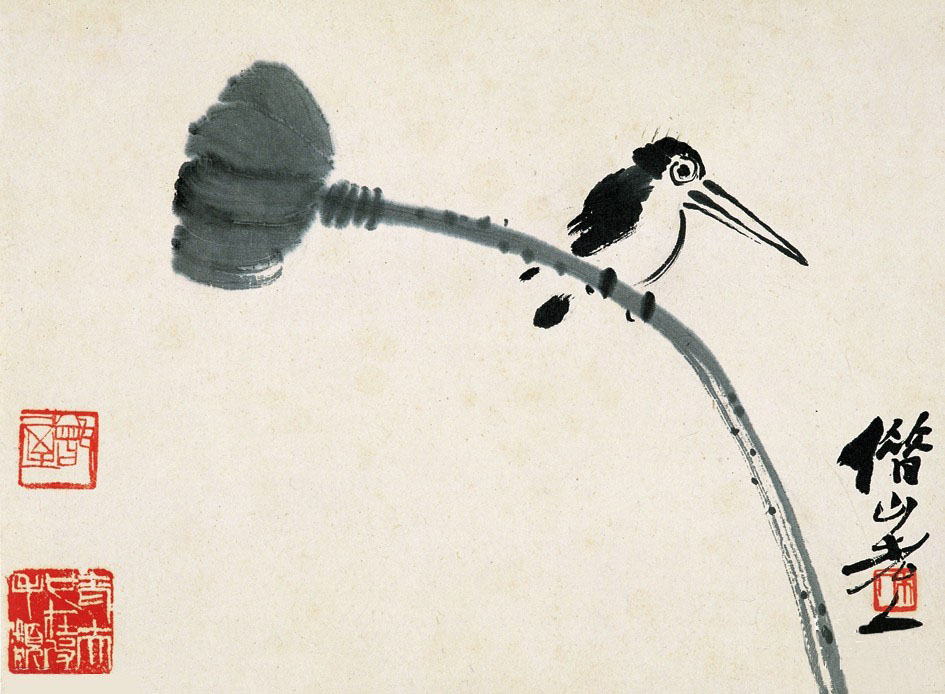Examine Chinese aesthetics outside Western discourse

Ancient Chinese considered Zhongyong, or “equilibrium and harmony,” to be an aesthetic tradition that seeks a return to harmony with nature.
Chinese and Western aesthetics share a lot in common but also have a lot of differences. The aesthetic thought system in ancient China differed from that of the West in its purpose and interests in forms, concepts and categories. Therefore, examining ancient Chinese aesthetic views by simply using Western theories and standards will lead to inadequate interpretations.
Zeng Fanren, a professor from the Center for Literary Theory and Aesthetics at Shandong University, said that when reviewing research on ancient Chinese aesthetics, it is problematic for scholars to adopt Western theories to interpret Chinese aesthetic phenomena. For example, some Western concepts, such as “beauty is about proportions, symmetry and harmony,” and the concepts of “perfection of sensitive cognition” and “beauty is the sensual manifestation of ideas.” These concepts are all subjective.
Zeng attributed the Western interpretation of Chinese aesthetics to the popular perception that Western civilization originated earlier than Chinese civilization. But the fact is that the two civilizations fall into two categories, which respectively brewed different types of aesthetics. Therefore, it is necessary to track the development of Chinese aesthetics via comparisons with those of the West while avoiding complete adherence to the Western theories.
Wang Jiande, dean of the Institute of Aesthetics at Capital Normal University, said that in general, Chinese aesthetics can be differentiated from those of the West in the following aspects: The first is the non-conceptualized demonstration of forms. The field of Chinese aesthetics not only focuses on knowledge construction, but also seeks an ideological explanation of reality. Its development is closely related to human activities, thus presenting vivid scenes. Second, the Chinese spirit profoundly affected the development of Chinese aesthetics. Confucianism, Taoism and Buddhist traditions influenced the orientations of aesthetics in different periods, while the changing relations between the three schools of thoughts also impacted the way Chinese aesthetics dealt with problems, and how it presents ideas as well as ideological and theoretical changes. In this sense, the development of Chinese aesthetics is a process of independence, interweaving and interaction between diverse cultures and ideological elements.
The Chinese considered “equilibrium and harmony” as one important aesthetic tradition. The concept comes from the Zhongyong Chapter of the Book of Rites: “While there are no stirrings of pleasure, anger, sorrow or joy, the mind may be said to be in a state of equilibrium. When those feelings have been stirred, and they act in their due degree, there ensues what may be called the state of harmony.”
Chen Wangheng, a philosophy professor from Wuhan University, said in the Book of Rites, equilibrium and harmony often appear as a whole: “The equilibrium is the great root from which grow all the human actions in the world, and the harmony is the universal path which they all should pursue. Let the states of equilibrium and harmony exist in perfection, and a happy order will prevail throughout heaven and earth, and all things will be nourished and flourish.” He assumed that Chinese aesthetics, with equilibrium and harmony at its core, would become a common pursuit of world aesthetics after new interpretation and adequate adjustment.
Wang suggested that from an ontological perspective, Chinese aesthetics aim to express harmony, emphasizing “the union of nature and man” which seeks return to harmony with nature. It gives prominence to the idea that “mutual awareness between the soul and materials” focuses on exchanges and interactions between egos and non-egos as the starting point and conclusion of aesthetic experience. “Integration of the beautiful and the good” is also highlighted. It embodies the supreme pursuit of aesthetic spirit that reveals the intrinsic unification of moral and aesthetic realms of individual personality and life activities. In terms of the formation of aesthetic experience, Chinese aesthetics emphasizes “infusion of sense and sensibility.” In other words, it focuses on the unification between the internal affection of subjects and human perception on objects. The unification means that elements are not separate, or one overwhelming over another, but infusion and harmony.
Zeng suggested making adjustments to Chinese aesthetics by comparing it to that of the West, and introduce it to the world to make Chinese contributions.
Zhang Chunhai and Su Pei are reporters at the Chinese Social Sciences Today.

 PRINT
PRINT CLOSE
CLOSE